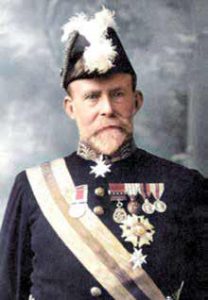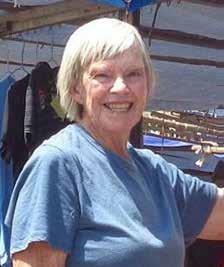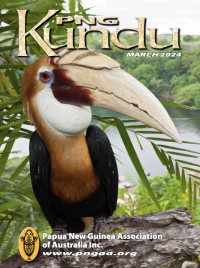LETTERS TO THE EDITOR
PNG’s Constitution
Belated congratulations on the article about the PNG Constitution by Judge Kerr in your September 2023 edition. From his tenure as Law Faculty Dean at UPNG up to his current ADF review, Justice Kerr has served the governments of PNG and Australia with distinction.
Also, as the author of published reports on the PNG Constitution, there can be few lawyers better qualified to provide this brief overview of the past and future PNG Constitution.
Kerr’s residence and research in PNG has enabled him to offer, in his introduction, a credible view of the period before Independence—a view which is refreshingly different from the mainstream opinions, which persistently cast blame on the Whitlam government for ‘rushing’ Independence.
Kerr states that, after the Second World War, Australia’s PNG administrators were complacent about decolonisation and were too slow to prepare the people for self-government.
Kerr’s opinion may be a minority one, but it is evidence-based and resonates with a number of observers and residents of that pre-Independence era.
Greg Ivey
The Merrie England
What an excellent edition the December PNG Kundu is. Maybe the best yet. I found the Merrie England article very fine and I’d never seen that portrait of Sir William MacGregor.
Incidentally, the year after Sir William presented old Government House Brisbane to the University of Queensland my grandfather sat in the first class.
It was interesting to learn that the Merrie England went to the site of the Quetta wreck.
By the way, the full title of All Souls’ Cathedral on Thursday Island is All Souls Quetta Memorial Cathedral.
David Wetherell
Scholarship Update
The scholarship program has gone well this year. The six Grade 9 students have achieved well and were very grateful for the book packs we were able to give them.
In 2024, they will go into Grade 10 and will be preparing for a national exam at the end of the year to see if they can proceed to Grade 11 and 12. Their marks indicate that they are likely to continue to Grade 12.
I would like to arrange another book pack for them with appropriate study guides for their Grade 10 subjects. This will cost approximately K350 each. We do not know what their school fee will be until the National Education Board sets the fee at the opening of the 2024 academic year.
If you would like to sponsor another batch who will be coming into grade 9, I can arrange that.
I went to this year’s Grade ten graduation at Anguganak. The Anguganak airstrip is closed at present so this involved flying into Nuku in a single engine plane and then going by road for three hours to Anguganak.
Anguganak is a remote place but the people value education for their children. Thank you for making this possible with your sponsorship program. Long term it will result in teachers and health workers coming back into the village to help with development and services.
All the best to you and your colleagues.
Glenda GileS
Information About Evacuees Please
I would appreciate help from the association’s members and other readers of PNG Kundu.
I am undertaking research for my Master of Research thesis at Macquarie University. The subject of my thesis will be research into how the women and children involved were evacuated from Rabaul in December 1941. I will also highlight the experiences of these women and determine how they survived on their return to Australia.
I wish to contact any relative of these evacuees to discuss their experiences during their evacuation and the period from their arrival in Australia until the end of 1946.
If you can assist, please contact me at: john-hugh.reeves@students.mq.edu.au or 0448 483 932.
John Reeves
From a New Member
I am from PNG and I am based in Port Moresby. I am on a short visit to Canberra with my wife via Coochiemudlo Island, Qld.
Our host on the island was Keith Stebbins, a former resident in PNG for 38 years. He gave us a copy of the December 2023 issue of PNG Kundu and it made a great impression on me. In 2009 I had received, unexpectedly, a black and white copy of the PNGAA magazine which contained an article I had written, but of which I had no knowledge of its being published.
Nevertheless, I was pleased with the person who was responsible for its publication.
The new look publication of the PNG Kundu has taken a professional approach that takes the image of the PNGAA to another level of marketing excellence. I am so thankful for that.
PNG Kundu has prompted me to register my membership with PNGAA.
Congratulations on the new outlook.
Ilaita Gigimat
Editor’s Note: Ilaita’s story in Una Voce in 2009 was forwarded to the journal by Dr Jon Ritchie.
A Question of Land Ownership
The land litigation of the historical towns Wau and Bulolo started in the 1960s and is ongoing. Many tribes and clans have joined the Land Court case of the said township including the 6,000 hectares of state land.
In the Social Mapping and Socio-Economic Impact Study of the Hidden Valley Gold and Silver Project, John Burton has indicated that Biangai are the owners of these 6,000 hectares.
However there are arguments indicating that the land belongs to Nautia people based on accounts of events witnessed by Helmuth Baum, the prospector, in the 1920s. These accounts are supported by Beatrice Blackwood, an anthropologist who worked among the Kuka Kuka in 1936 and 1937.
I am in favour of the arguments that the 6,000 hectares are Nautia Land.
Hence, if any of your readers has a copy of any written record of Helmuth Baum and his first contact with the senior Nauti man at Ingelita, Upper Watut in the Bulolo District, I would much appreciate a copy of it and if they exist, photos of the senior Nautia man, Upper Watut area and copies of any sketch map of Nauti land.
Any materials or information provided corresponding to the subject will be appreciated.
Thank you.
Simba Adam simbaadam52@gmail.com
Memories of Nadzab
Editor’s Note: After seeing a news item about the new international airport at Nadzab, I sent it to an old colleague of mine for comment.
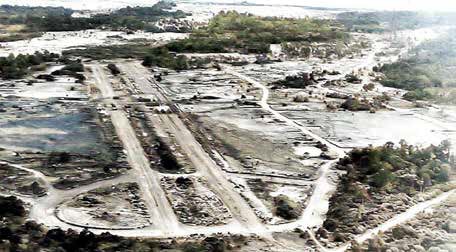
The old Nadzab Airfield in 1944—one of the busiest airstrips of WWII—
it fell into disuse after the war but was reopened in 1977, redeveloped
in 2019 and the official opening was in October 2023 (see page 18 of this
issue for more information)
As a veterinary officer based in Lae in the late fifties and early sixties he went often to the Erap Livestock Station which adjoined the old Nadzab strip.
He replied as follows:
Thanks for the Nadzab item. When I first arrived in Lae I was issued with an old Land Rover. On a visit to Erap I took the Rover, with my ‘boys’ on board, for a spin down that extremely long airstrip. It took ages to get up to 60 mph and then, eventually, it reached 62 or 63, wildly celebrated with unanimous applause from my passengers.
Keith Smith had a peanut farm near the strip and had a few pigs. When castrating a litter, a feral sow came out of the bush and chased Samual, one of my offsiders, who was holding one of the patients, around the old Land Rover. Keith’s young daughter, who was watching proceedings, started screaming. Keith picked her up and followed Samual, still holding the young pig, around and around the vehicle until all jumped up onto the bonnet.
This left me as the sow’s sole target.Fortunately, there was a very large, heavy broom, used to clean his piggery, nearby. The sow and I faced up and, after a few blows landed on her snout, she returned to the bush and the near hysterical child was returned to her mother and we continued our work.
Col Tomkins was the manager of Erap. He was there for years and, as you might recall, I spent a great deal of time and energy at Erap eradicating TB and brucellosis from the property’s very poor-quality cattle. I could go on but will spare you the sweaty details.
Terry Rothwell
Johnson Cargo Cult in New Hanover
I refer to the article in the December 2023 issue of PNG Kundu about Johnson Cargo Cult.
My father was Jim White, a planter in New Hanover from the 1950s to 1987. We lived on Lungatan Plantation and we owned/leased other plantations around New Hanover—Lungatan, Benge (next to the Catholic Father’s Mission on Lavongai), Metawoi, Wassanga, Metisong, Lamauling, Patiwai and Barwon. The latter three were on Three Islands Harbour.
In the 60s when the Johnson Cult occurred I was in my late teens, early twenties and I remember these happenings quite clearly.
Firstly, my father had good relations with both the Catholics on Lavongai and the Methodists on Ranmelek. I also remember the visit of the American Survey/ Reconnaissance Team in 1962 and my father keeping the Americans up late into the night over a bottle of whiskey reliving the fact that Australians, not the Americans, were responsible for victory in the Pacific. They took this news with good humour.
I was an anthropology student at Sydney University and the anthropologist, Dorothy Billings, was my Lecturer/Tutor. I have recently re-read her book (right) on the Johnson Cult, Cargo Cult as Theater.
Rather than portraying the Lavongai people as naive primitives who believed that manna was about to fall from Heaven, my father (who knew the Lavongai people very well) believed they were intelligent, astute politicians who saw an opportunity and took it.
New Hanover/Lavongai is a very beautiful part of the world, an island about 30 nautical miles from Kavieng. However, as an island it never received the attention that the New Irelanders received, either in health or education services.
There had been a government outpost at Taskul but in the early 1960s the government decided, for budgetary purposes, to suspend the patrols that once visited villages around New Hanover. Government services and support started to dry up and while the Catholic and Methodist missionaries did provide services these were not sufficient.
New Hanover became a forgotten part of the world and the people sorely felt the results of this on a personal level.
My father tried to bring this to the attention of the authorities as early as 1962, to no avail, and the resentment of the locals grew. What could they do to draw attention to their situation?
On the one hand we had the American Survey Team and their numerous comments about President Johnson providing help. Coupled with this was the formation of an agricultural co-operative by Father Miller, in charge of the Catholic Mission at Lavongai, an American.
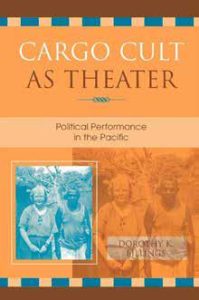 When the pre-elections of 1964 came up an opportunity was presented for the Lavongais to publicise their grievances and bring to the attention of the authorities what they perceived as neglect and lack of support. This was an opportunity which they took. If firstly the Germans, and then the Australians, were not going to help them, then why not appeal to the Americans?
When the pre-elections of 1964 came up an opportunity was presented for the Lavongais to publicise their grievances and bring to the attention of the authorities what they perceived as neglect and lack of support. This was an opportunity which they took. If firstly the Germans, and then the Australians, were not going to help them, then why not appeal to the Americans?
The Johnson Cult was never a primitive people believing in magic, or that cargo would arrive from America, but a very astute political movement. They simply started to refuse to pay their taxes, saying they would pay them to the Americans instead if they would listen and help provide agricultural, health and education services.
The Australian Government’s reply was heavy handed and ineffective. Instead of listening to the people and the planters and missionaries, who were close to the people, and providing the services, support and patrols that were requested, they started to round up and jail the leaders of the cult. This had the exact opposite effect to what was intended. Instead, these actions made martyrs of the leaders and the movement spread.
It was still going during the 1964 elections and for years the people continued to refuse to pay their taxes and waited for help from the Americans and especially from President Johnson for whom they voted in the elections. They simply changed the name of the candidate on the blackboard which served as the voting tally.
So, the Johnson affair was not a cargo cult in the well-known sense of the term but a logical response from a people who believed they were being let down and not being heard. However, it makes for an interesting story.
Karen Wilson (White)
Harold Oscar Norris and Marie Padgett
This is a call for information/assistance for any information on Harold Oscar Norris and sons, evacuees from PNG to Cairns in March 1942 on board the Alagna, which apparently departed from Daru. He was meant to have been on board the Quest owned by Janet Cowling but instead arrived on the Alagna.
He was 64-years-old on arrival, with two sons Steve and John Norris (2 and 1.5 respectively)—their mother died in PNG. Harold worked on copra plantations in PNG, throughout the Bismarck Archipelago, also worked for Burns Philp and may have lived on Thursday Island. Harold lived in Cairns after arrival where the boys were raised and attended school.
I am seeking any information about the mother of the boys—a Melanesian (PNG or other, we don’t know) with the assumed Caucasian name Marie Padgett—apparently a worker at one of the plantations where Harold was.
My grandfather’s (Steve Norris) dying wish was to find out where his mother (Marie) came from and something about her heritage. We have no information whatsoever. Any suggestions, information or assistance would be greatly appreciated. Thank you in advance.
Steve Foley
sjfoley83@gmail.com
 Thank you, John
Thank you, John
It’s been three great years working with you—there were a few teething editorial problems but, after constant bossing around by me (which, naturally, you totally ignored), all was ironed out—and peace reigned. Trouble is, you seem to have taken the quote in the last issue to heart:
It’s not the life in your years, it’s the years in your life!
All right for you, riding off into the sunset, but I’ll miss you—your knowledge, perspicacity, sense of humour, friendship and our little ‘chats’ -and wish you and Robin well for your justified ‘retirement’.
Jeannette Gilligan

